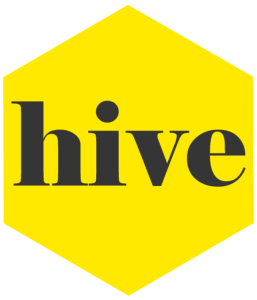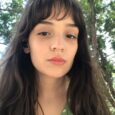Suddenly, I’m aware that I’m in a packed bar at 1:30 a.m. on a Wednesday night in Prizren. British post-punk is playing in the background, the atmosphere is lively and people are nice. I am hanging out with the group I traveled here with. We are all Serbian and nobody seems to care.
We arrived earlier that evening, and had just enough time to leave our baggage and quickly grab something to eat before watching a documentary at Kino Lumi. Our schedule was overcrowded, just like Prizren during Dokufest. I didn’t mind, though. I was eager to explore all of it — the festival, Prizren and Kosovo itself.
Immediately upon arrival, my fear of being away from Novi Sad or speaking Serbian vanished, as I noticed a first similarity between Albanians and Serbs: we both pride ourselves on being good hosts. My first interaction with a local was with a hostel owner. I initiated the conversation in English, and then he asked me where I was from:
“Oh, Vrbas, it is close to Novi Sad.” (I had a plan in which I would lie about where I was from, yet for some reason I just couldn’t.)
“Novi Sad!? Pa zašto ne pređemo na srpski!” Novi Sad? Then why aren’t we speaking Serbian!
Honestly, I had no idea that people born in the 80s and before spoke Serbian. Additionally, I was a bit surprised how throughout the trip I spoke Serbian, and nobody really seemed to bat an eye. What I experienced during my trip did not resemble the image I had from Serbian media whatsoever.
I have mostly seen the word Kosovo in a phrase “Kosovo je Srbija” (Kosovo is Serbia), graffitied on numerous buildings and houses or worn on T-shirts by mostly boys and men.
As a 24-year-old who grew up in a small town in northern Serbia, my view of Kosovo was mostly created by media and propaganda. We didn’t learn about the wars that happened as Yugoslavia disintegrated in the 90’s; any discourse was mainly one-sided. I have mostly seen the word Kosovo in a phrase “Kosovo je Srbija” (Kosovo is Serbia), graffitied on numerous buildings and houses or worn on T-shirts by mostly boys and men.
A new view of Kosovo
I gained most of my knowledge about the war in Kosovo during my university days. It started with Ognjen Glavonić’s documentary, “Depth Two,” which talks about attempts to hide the bodies of the Albanian civilians after a massacre committed by the Serbian forces under Slobodan Milošević. This led me to learn more about the war through searching, reading and watching anything I could find on the internet.
That’s how I stumbled upon an interview of Zoran Rašković, a former member of the Jackals, a Serbian paramilitary group, in which he talked about massacres in Qyshk. It’s also how I found publications by Youth Initiative for Human Rights and OSCE. And, of course, it’s still something I learn about day-to-day through media such as KoSSev and BIRN. But even though I prided myself on knowing both sides of the story, I wasn’t really aware of the current state of politics in Kosovo.
I traveled to Prizren with Heartefact, a multi-disciplinary organization that is mainly a theater company. Earlier in July, they had an open call inviting people for an organized trip to Dokufest. I always wanted to visit Kosovo, and I finally had a chance. I sent in my CV and a motivational letter, and a week later, I was selected along with 10 others. Our group was mostly students and young people who dabbled in art, media and social sciences.
Besides taking us to movie projections, Heartefact also organized a meeting with Dokufest organizers Linda Gashi, Alba Cakalli and Samir Karahoda. The meeting was held in the cafe in the garden of Lumbardhi cinema, an old, worn-out building built in the 50s. The government tried to demolish the building to make a parking lot on two occasions, 2007 and 2014, but locals protested against the demolition of the building. These small important victories left me in awe: they had managed to push the proverbial boulder over the hill. As Bengi Muzbeg, head of Film Programs and Archives at the Lumbardhi Foundation, had jokingly told us: “We didn’t let capitalists win!”
A lot of us, ignorantly, thought that people in Kosovo suffer from the same problems that we do.
For most of us who came with Heartefact, it was our first visit to Kosovo and we had many questions. As our conversation with festival organizers began, I came to realize how Serb-centric my view was. A lot of us, ignorantly, thought that people in Kosovo suffer from the same problems that we do.
“What do you mean you do not have problems with censorship?”
“What do you mean you get to have creative freedom and also funding from the state?”
“What do you mean you have different politics down here?”
I realized how much I didn’t know.
I have viewed Kosovo discourse in Serbia as a politician’s way to stall on other important things. It is a subject stuck in time and space and whenever we need to focus on the future, the government pulls the “Kosovo card.” A lot of people are tired of the topic and its continual lack of resolution, but it remains a polarizing topic among Serbians. I feel that in Serbia we have a lot of dividing topics that slow our growth.
Discovering Kosovo’s realities
Talking with festival organizers and Vatra Abrashi, co-founder of Autostrada Hangar, the only contemporary art institution in Prizren that is also a nongovernmental organization, I got the impression that Kosovo’s politics have more unity. All sides were driven by the same goals, no matter the political ideology — for Kosovo to be a country recognized by all and join the EU. In that sense, Kosovo’s politics felt more progressive and future oriented, while politics in Serbia have been stuck in the same rut for quite some time now.
I also somehow didn’t know how young Kosovo’s citizens are. Kosovo’s population is the youngest in Europe, with 31% of its people being 18 or younger, while Serbia’s is one of the oldest, with an average age of 43.8. The age difference was obvious in many ways. On weekdays, bars and cafes were packed: in the morning with families and late nights with young people, who sometimes bring their babies as well.
It was a joy to be surrounded by so many young people — the energy was vigorous, the town was full of life.
A Wednesday night in Prizren was more eventful than a weekend in Novi Sad. I know I visited during Dokufest, but on weekdays, bars in Prizren were open until 2 a.m., while everything closes at 1 a.m. on a Friday night in Novi Sad. It was a joy to be surrounded by so many young people — the energy was vigorous, the town was full of life.
Returning to Novi Sad was a bit depressing, since I noticed how empty its streets were past 10 p.m. much more. However, I came back with a perspective I never would have gained through any kind of media, and with a sensibility that only real life experience can create. Maybe that’s how we move forward: young Kosovars and Serbs going and seeing how the other side lives, learning more about one another.
Feature image: Atdhe Mulla / K2.0
 Want to support our journalism? Become a member of HIVE or consider making a donation. Learn more here.
Want to support our journalism? Become a member of HIVE or consider making a donation. Learn more here.

